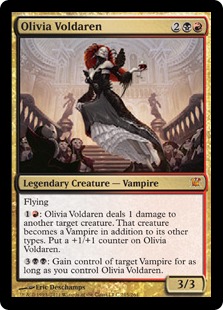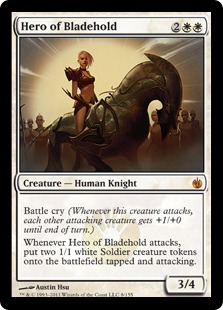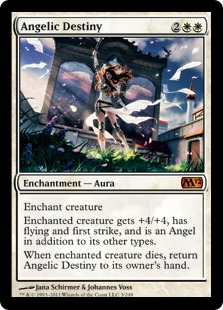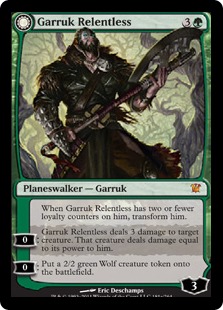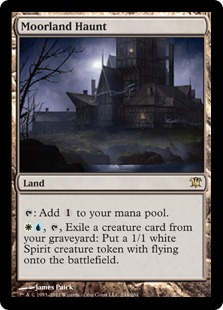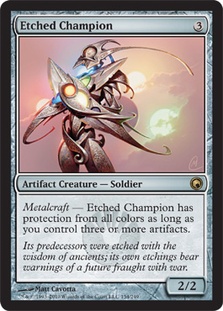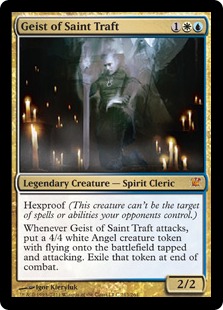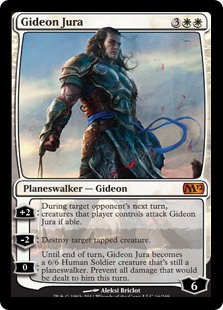This week we’re going to take a break from the world of “bling bling” and turn our sights to the World Championships. I love big Magic tournaments like Worlds. I get to be a spectator and watch the best minds in the game battle for pride, glory, and the big money. Beyond rooting for my favorite players, I also get the chance to see the metagame evolve first hand. My mode of operation is to watch every tweet and scour the coverage pages for hints of new technology. If you do the same thing, then this article is not going to be very exciting for you. I’m not going to reveal anything that you couldn’t find in coverage, but what I will do is summarize the developments that are financially relevant and help you to interpret these developments.
The Hive Mind
This term has been used to describe the masses of Magic players who play and tune the decks of the current metagame. It’s important to understand this process because it can help you read the financial landscape. This landscape is sculpted by the demand for cards. This demand is fostered by a lot of different drivers, including casual appeal and collectability. Today (since the topic is Worlds) we’ll be focusing on demand that’s driven by competitive Magic.
Competitive magic is big business. There’s an army of FNM players, who stand at the ready to receive orders from their commanding officers (favorite writers/players). They’re armed with their wallets and trade binders ready to make a move on the latest tech. For example, when I got to FNM last Friday, there was a kid looking for Lilianas so he could build the Grixis Control deck that Patrick Chapin played at Worlds only a day earlier. This is typical whenever there’s a big tournament. Each tournament has a different role in the world of MTG Finance, and they each interact with the market differently.
Large-Scale Tournaments (Grand Prix / Pro Tour) —This is where new technology is revealed. These tournaments have the highest stakes, and it’s where the best minds in Magic dig deep to come up with the most intelligent approaches to the metagame. Cards are most likely to shoot up out of nowhere during these tournaments because the technology is typically kept under wraps until these events.
Mid-Scale Tournaments (StarCityGames.com Open) — These tournaments have the same effect as the large-scale tournaments, but to a lesser degree. The technology is kept as secret as the tournaments above, and the innovations are typically done on a micro level. The tournaments on this level give Magic players a reason to invest in the hobby beyond the “fun factor.” When you can win a significant amount of money in a tournament, it makes paying $30 for a Snapcaster Mage much less painful.
Friday Night Magic (FNM) — FNM players are the biggest consumers of the Hive Mind. The FNM metagame is a mixture of home brews and the winning decks from recent large or mid-scale tournaments. FNM does very little to influence the Hive Mind. For example, if you have a home brew that wins all your FNMs, this will not affect the price or demand for cards in the deck unless you win something other than FNM with it.
Magic Online (MTGO) — This is the laboratory where all the scientists (grinders) work. It’s a good place to spot technology early and to see pricing trends. The market on MTGO is very efficient; prices rise and fall by the hour because the demand and satisfaction of demand is real time. When technology is revealed at the large or mid-scale tournaments, the first place that you are going to see a price increase is on MTGO. This makes MTGO a great place to see early trends.
Questions
Worlds is in the books, but there are still questions to be answered. What decks do you expect to see at FNM this week? What deck will be called “the best deck” two weeks from now? What cards will be in demand? What cards will lose value? Typically you come to me to help answer these questions for you. I’m honored to be your go-to guy for financial information, but it would serve you better if you could interpret the next twists and turns for yourself. I can’t teach you how do that in a single article, but we are going to start with some basics.
No one knows the answers to the questions above. All we can do is to learn to read the trends. Some people are better than others at this, and some people (like me) have developed an instinct for where these trends will go. There are three steps that I take when I’m trying figure out where the metagame is going and which cards will be well positioned and in demand.
Identify
Hypothesize
Test
Guys like Patrick Chapin, Gerry Thompson, and Drew Levin all use the same process when trying to break the format. These guys are well respected in the Magic community (and by me) because they’ve developed that instinct that I talked about above. Let’s talk about these steps in detail and then look at some cards from Worlds.
Identify
The first step to understanding the future is to understand the present. Worlds brought an exciting new look at Standard. Going into the weekend, it looked like Illusions was one of the best decks in Standard. Many of the decks that ended up on top were respected decks like Illusions and W/x aggro with cards like Slagstorm, Inferno Titan, and Ratchet Bomb. Let’s look at some of the exciting cards from Worlds and determine where they’re going price wise. I want to start with some of the cards that I consider “winners” from the weekend.
Winners
These are cards that jumped up in price over the weekend. Typically it’s not a good practice to “buy-in” after a card has seen a price increase, but it can be a viable strategy. There are two strategies available when dealing with cards in this category.
Pass — Picking up these cards is risky because it’s possible that they’ve reached their full potential. If you pick them up, then you risk losing value if they start trending downward. This frees your resources up to invest in less risky cards (see Late Bloomers).
Engage — I think this word has worn out its welcome in my articles, but the least we can do is give it a cameo every now and then. If you buy or trade for cards in this category, then you need to have an exit plan (unless you want to play with them, then it isn’t a financial decisions). Don’t pick up cards like this if you plan to be out of the trade game for a week or two. The price could drop in your down time, and you could lose value.
On the other hand, there are advantages to trading for cards in this category. Cards that have quick price increases are typically in high demand. This allows you to trade them away at a premium, and it ensures that they won’t sit in your trade binder. I trade a lot, so I like to “buy-in” on the hot cards and gain value in the exchange.
Consider which of these strategies best fit your mode of operation for the comings weeks. Let’s look at the winners.
Olivia Voldaren $14.99
One of the biggest winners this weekend was this card. It was not in an undefeated deck or in the Top 8, but hearing Patrick Chapin call it the next Baneslayer Angel on camera definitely evoked a response. It went from $5.99 to $14.99 over night. Before this happened it went from 3 tickets to 10 tickets on MTGO; remember what I said about watching trends?
Hypothesize: This is a mythic rare, and it’s well positioned against the decks from the Top 8 of Worlds. I expect it to see more play and to maintain its current price over the next few weeks while the metagame adapts.
Hero of Bladehold $15.99 (Sold Out)
This card has been on the rise lately. It was the most played mythic in the Top 8 of Worlds, weighing in at 20 copies. It plays a significant role in Tempered Steel, G/W Tokens, and in U/W Humans. This is one of the cards that had been encouraging the resurgence of Dismember (which is back up to $3.99 BTW).
Hypothesize: I expect Tempered Steel to see an increase in popularity and this card to rise in price with the demand. It’s currently sold out, but I expect it to be $20+ when it’s restocked.
Angelic Destiny $19.99 (Sold Out)
This card has been seeing play in U/W Humans, and even though it’s only a one-of in Craig Wescoe sideboard, it’s jumped $5 since its $15 price tag a couple of weeks ago. As long as U/W Humans is an archetype, this card will be viable in Standard.
Hypothesize: I expect this card to maintain its current price tag for the next two weeks.
Garruk Relentless $29.99
This is a four-of in the G/W Tokens deck because of its robust set of abilities. It can kill a creature, make tokens, and tutor for a creature. Garruk’s potential is being recognized in Standard, and it has been seeing a lot of play in Block Constructed. This is a card that I have been picking up aggressively.
Hypothesize: Garruk’s price has surpassed Elspeth Tirel’s, and I expect its upward trend to continue. Garruk’s price will easily hit $35 in the next 3-4 weeks.
Late Bloomers
These are cards that I expect to go up in price, but their prices were not yet affected by the hype of Worlds. I recommend picking these up at the trade tables.
Moorland Haunt $2.49 (Sold Out)
This card has been crucial in many different creature strategies including, U/W Humans, Mono-Blue Illusions, U/W Blade, and now in Tempered Steel. This is easily a $5 rare, and it surprises me that it hasn’t gotten there yet. The low activation cost also could have viability in Modern and Legacy.
Hypothesize: This card will be $5+ in the next two weeks.
Etched Champion $2.99
This card has always been a great seller for me. I don’t trade a lot of them, but I sell a lot on my sales list. Now that there are 16 of these in the Top 8 of Worlds, I expect them to see a price bump.
Hypothesize: I expect this to be popular, but it is still only a rare (in the world of mythic rares). I expect it to go up to $3.99 over the next week, but I wouldn’t be surprised to see $4.99.
Losers
These are cards that are down in value from last week. Cards in this category can be good to pick up if you expect them to rebound price wise.
Geist of Saint Traft $14.99
This card is down from $20 but continues to pop up in winning decklists. This weekend, it was in Craig Wescoe undefeated U/W Humans deck. It was also in Conley Woods‘ Modern Zoo deck; it was a one-of, but this speaks a lot about its potential in the format.
Hypothesize:Â This was a four-of in one of the Top 8 decks from this weekend. It would be foolish to think that the price won’t go up. I expect them to go back up to $20 and maybe even hit $25 before the price starts trending down again.
Karn Liberated $9.99
This card is down from $12, but it’s been seeing more play lately. Its first appearance was in the sideboard of Wolf Run Green, then in Neeman’s U/B Control, and now in Cuneo’s day one undefeated U/W Control deck.
Hypothesize: The most copies of this card in any given deck is two; this means that the demand will remain low for this card. It will maintain its current price for the foreseeable future.Â
Gideon Jura $9.99
This card was also in Cuneo’s U/W Control deck, and Conley Woods was sporting two of these in the sideboard of his Modern Zoo deck. Gideon has always been great against aggressive strategies, and with these strategies on the rise, I expect to Gideon to see more play.
Hypothesize:Â The demand for this card will increase, but since it’s been printed in two sets, it’s hard to see the price go up too high. I expect to see a small increase (if any) over the next few weeks. It should land in the $12-13 range.
Test
I’ve given a lot of opinions on different cards, but these observations can change in an instant. If Gerry Thompson thinks that a certain card is good in Standard and then the meta shifts, then it’s possible that the card isn’t good anymore. As a player, do you still play the card that Gerry talked about in his article, despite the meta changes? Of course not, but this happens a lot. People either don’t recognize the meta change, or they don’t know how to react to it. The same is true about financial information. New information can change the trajectory of these cards, so you have to be able to read the financial meta.
The financial meta is defined by information. Here are some of the places that I go to daily to check up on pricing trends.
www.dailymtg.com — Go here for the Worlds results. Pay particular attention to the undefeated Modern decks. This information is not published yet, so I can’t analyze it, but you should check it out to see which cards are making a splash there.
MTGO Results – People will start grinding with the decks from Worlds over the next week. Watch the trends. Then look up the prices of cards that are showing up.
www.mtgotraders.com — This is where I go to check MTGO Prices. You can check in the classifieds in MTGO, but if you are doing research and you don’t have MTGO, this is a good place to see what things are selling for and what is sold out.
Twitter — A lot of people have written about the value of Twitter. I don’t want to re-hash that same topic, but I will say that you should be checking this daily and start following the financially relevant people. You can start with the pros on this site, me and Ted Knutson.
Pricing — Check out this article on how to check card prices and monitor the cards on your hotlist.
That’s all I have this week. Thanks for reading and see you next week with the continuation of the series on Pimp!
Jonathan

